
Visit Bucharest half a day e-bike tour
3 h
About this activity
Itinerary
This is a typical itinerary for this product
Stop At: Victoriei Street, Bucharest Romania
We will see old and beautiful houses , churches and talk abaut the history of the first woden paved road of Bucharest
Duration: 50 minutes
Stop At: Romanian Athenaeum (Ateneul Roman), Str. Franklin 1, Bucharest Romania
Here we have the Romanian Athenaeum
The building was designed by the French architect Albert Galleron, built on a property that had belonged to the Văcărescu family and inaugurated in 1888, although work continued until 1897. A portion of the construction funds was raised by public subscription in a 28-year-long effort, of which the slogan is still remembered today: "Donate one leu for the Ateneu!"[2]
The overall style is neoclassical, with some more romantic touches. In front of the building there is a small park and a statue of Romanian poet Mihai Eminescu.
Recognized as a symbol of Romanian culture, the building has been inscribed in 2007 on the list of the Label of European Heritage sites.
Duration: 15 minutes
Stop At: Revolution Square (Piata Revolutiei), Calea Victoriei Boulevard, Bucharest Romania
Revolution Square (Romanian: Piața Revoluției) is a square in central Bucharest, on Calea Victoriei. Known as Piața Palatului (Palace Square) until 1989, it was later renamed after the Romanian Revolution of December 1989. The former Royal Palace (now the National Museum of Art of Romania), the Athenaeum, the Athénée Palace Hotel, the University of Bucharest Library and the Memorial of Rebirth are located here. The square also houses the building of the former Central Committee of the Romanian Communist Party (from where Nicolae Ceaușescu and his wife fled by helicopter on December 22, 1989). In 1990, the building became the seat of the Senate and since 2006 it houses the Ministry of Interior and Administrative Reform.[1]
Duration: 15 minutes
Stop At: The Arch Of Triumph, Piața Arcul de Triumf, București, Romania
The first, wooden, triumphal arch was built hurriedly, after Romania gained its independence (1878), so that the victorious troops could march under it. Another arch with concrete skeleton and plaster exterior of elaborate sculptures and decoration designed by Petre Antonescu was built on the same site after World War I in 1922. The arch exterior, which had seriously decayed, was replaced in 1935 by the current much more sober Neoclassical design, more closely modelled in the Arc de Triomphe in Paris. The new arch, also designed by Petre Antonescu and executed in stone, was inaugurated on 1 December 1936.
The arch has a height of 27 metres. It has as its foundation a 25 x 11.50 metres rectangle. The sculptures with which the facades are decorated were created by famous Romanian sculptors such as Ion Jalea and Dimitrie Paciurea.
Duration: 15 minutes
Stop At: Herastrau Park, B-dul Aviatorilor, Bucharest Romania
The park has an area of about 187 ha, of which 74 ha is the lake. Initially, the area was full of marshes, but these were drained between 1930 and 1935, and the park was opened in 1936. The park is divided into two zones: a rustic or natural zone (the Village Museum), which is left more or less undisturbed, and a public/'active' domain with open areas for recreation activities. Small boats are allowed on the lake.
The park was initially intended to be called National Park (Parcul Național), but it was renamed Parcul Carol II during the period of the Carol II of Romania's cult of personality. Following World War II, it was renamed Parcul I. V. Stalin, featuring a statue of Stalin at its entrance. In 1956, during the de-Stalinization period, Stalin's statue was torn down and the name of the park was changed to "Herăstrău". The name Herăstrău referred to the Herăstrău lake, and has its origin in a dialectal version of the word ferăstrău in standard Romanian, meaning saw or sawmill,[2] referring to the water-powered sawmills that were once found the Colentina river which flowed through it.[3]
On 19 December 2017, by a decision of the Bucharest General Council, the park was renamed to "King Michael I Park" to honor the former King of Romania after Michael I had died on 5 December 2017.[1]
Duration: 45 minutes
Stop At: Muzeul National al Satului "Dimitrie Gusti", Kiseleff Road 28-30 In King Michael I Park, Bucharest 011347 Romania
This article is about the Romanian museum in Bucharest. For the Tanzanian museum, see National Museum of Tanzania.
Coordinates: 44°28′24.13″N 26°4′35.69″E
The church of the Timişeni village, now at the Village Museum
The Village Museum (Muzeul Satului in Romanian) is an open-air ethnographic museum located in the King Michael I Park (Bucharest, Romania), showcasing traditional Romanian village life. The museum extends to over 100,000 m2, and contains 272 authentic peasant farms and houses from all over Romania.
It was created in 1936 by Dimitrie Gusti, Victor Ion Popa, and Henri H. Stahl.
Duration: 1 hour
Read more
Show less
This is a typical itinerary for this product
Stop At: Victoriei Street, Bucharest Romania
We will see old and beautiful houses , churches and talk abaut the history of the first woden paved road of Bucharest
Duration: 50 minutes
Stop At: Romanian Athenaeum (Ateneul Roman), Str. Franklin 1, Bucharest Romania
Here we have the Romanian Athenaeum
The building was designed by the French architect Albert Galleron, built on a property that had belonged to the Văcărescu family and inaugurated in 1888, although work continued until 1897. A portion of the construction funds was raised by public subscription in a 28-year-long effort, of which the slogan is still remembered today: "Donate one leu for the Ateneu!"[2]
The overall style is neoclassical, with some more romantic touches. In front of the building there is a small park and a statue of Romanian poet Mihai Eminescu.
Recognized as a symbol of Romanian culture, the building has been inscribed in 2007 on the list of the Label of European Heritage sites.
Duration: 15 minutes
Stop At: Revolution Square (Piata Revolutiei), Calea Victoriei Boulevard, Bucharest Romania
Revolution Square (Romanian: Piața Revoluției) is a square in central Bucharest, on Calea Victoriei. Known as Piața Palatului (Palace Square) until 1989, it was later renamed after the Romanian Revolution of December 1989. The former Royal Palace (now the National Museum of Art of Romania), the Athenaeum, the Athénée Palace Hotel, the University of Bucharest Library and the Memorial of Rebirth are located here. The square also houses the building of the former Central Committee of the Romanian Communist Party (from where Nicolae Ceaușescu and his wife fled by helicopter on December 22, 1989). In 1990, the building became the seat of the Senate and since 2006 it houses the Ministry of Interior and Administrative Reform.[1]
Duration: 15 minutes
Stop At: The Arch Of Triumph, Piața Arcul de Triumf, București, Romania
The first, wooden, triumphal arch was built hurriedly, after Romania gained its independence (1878), so that the victorious troops could march under it. Another arch with concrete skeleton and plaster exterior of elaborate sculptures and decoration designed by Petre Antonescu was built on the same site after World War I in 1922. The arch exterior, which had seriously decayed, was replaced in 1935 by the current much more sober Neoclassical design, more closely modelled in the Arc de Triomphe in Paris. The new arch, also designed by Petre Antonescu and executed in stone, was inaugurated on 1 December 1936.
The arch has a height of 27 metres. It has as its foundation a 25 x 11.50 metres rectangle. The sculptures with which the facades are decorated were created by famous Romanian sculptors such as Ion Jalea and Dimitrie Paciurea.
Duration: 15 minutes
Stop At: Herastrau Park, B-dul Aviatorilor, Bucharest Romania
The park has an area of about 187 ha, of which 74 ha is the lake. Initially, the area was full of marshes, but these were drained between 1930 and 1935, and the park was opened in 1936. The park is divided into two zones: a rustic or natural zone (the Village Museum), which is left more or less undisturbed, and a public/'active' domain with open areas for recreation activities. Small boats are allowed on the lake.
The park was initially intended to be called National Park (Parcul Național), but it was renamed Parcul Carol II during the period of the Carol II of Romania's cult of personality. Following World War II, it was renamed Parcul I. V. Stalin, featuring a statue of Stalin at its entrance. In 1956, during the de-Stalinization period, Stalin's statue was torn down and the name of the park was changed to "Herăstrău". The name Herăstrău referred to the Herăstrău lake, and has its origin in a dialectal version of the word ferăstrău in standard Romanian, meaning saw or sawmill,[2] referring to the water-powered sawmills that were once found the Colentina river which flowed through it.[3]
On 19 December 2017, by a decision of the Bucharest General Council, the park was renamed to "King Michael I Park" to honor the former King of Romania after Michael I had died on 5 December 2017.[1]
Duration: 45 minutes
Stop At: Muzeul National al Satului "Dimitrie Gusti", Kiseleff Road 28-30 In King Michael I Park, Bucharest 011347 Romania
This article is about the Romanian museum in Bucharest. For the Tanzanian museum, see National Museum of Tanzania.
Coordinates: 44°28′24.13″N 26°4′35.69″E
The church of the Timişeni village, now at the Village Museum
The Village Museum (Muzeul Satului in Romanian) is an open-air ethnographic museum located in the King Michael I Park (Bucharest, Romania), showcasing traditional Romanian village life. The museum extends to over 100,000 m2, and contains 272 authentic peasant farms and houses from all over Romania.
It was created in 1936 by Dimitrie Gusti, Victor Ion Popa, and Henri H. Stahl.
Duration: 1 hour
Included
- Bike Helmet
- Use of bicycle
Not included
- Breakfast
- Lunch
- Entry/Admission - Muzeul National al Satului "Dimitrie Gusti"
Additional
- Confirmation will be received at time of booking
- Infant seats available
- Near public transportation
- Not wheelchair accessible
- Most travelers can participate
- This is a private tour/activity. Only your group will participate
Features
Tourism
95%
Cultural
85%
You may also like









 See all 26 Collections
See all 26 Collections
Click to discover other experiences
See all
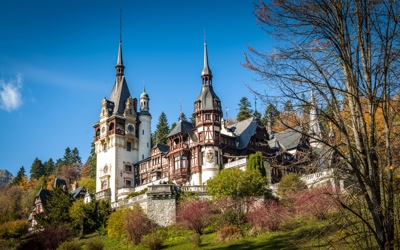
Collections
Castles
48 Activities
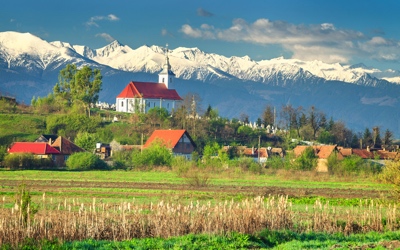
Collections
Transylvania
94 Activities

Collections
Other trips
72 Activities
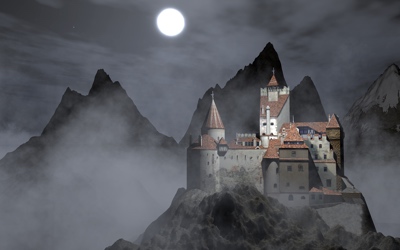
Collections
Dracula Tour
76 Activities
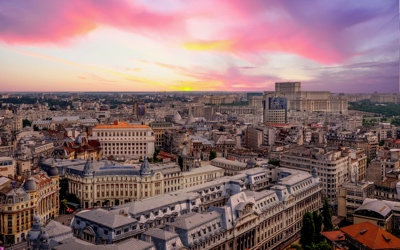
Collections
City tour
94 Activities

Collections
Walking Tour
23 Activities
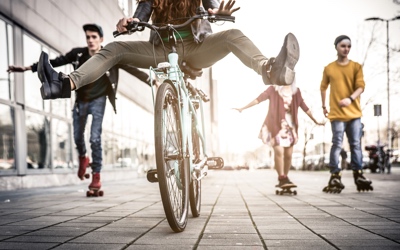
Collections
Original
26 Activities
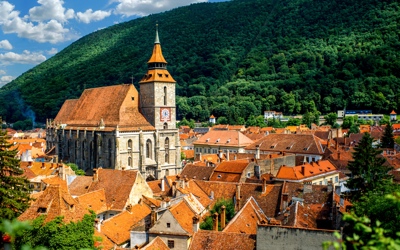
Collections
Medieval Epoch
25 Activities

Collections
Soviet Bucharest
25 Activities
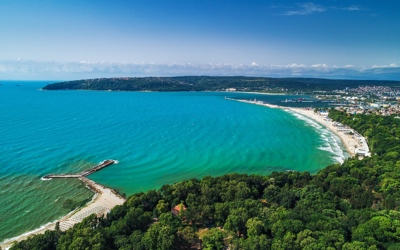
Collections
Bulgaria
23 Activities

